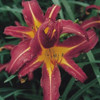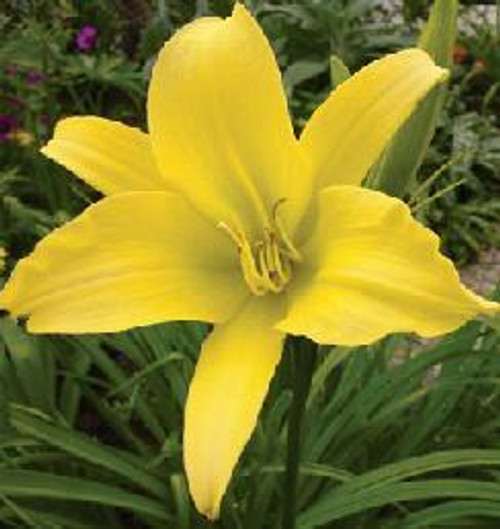Product Description
Hemerocallis - 'Sammy Russell Red' Daylily (RUSSELL, 1951) Single Fan bare root plant
Red Self.
Height 30 inches with a 4-inch bloom.
Mid to Late Season bloom, Dormant, Diploid.
Hemerocallis 'Sammy Russell' is a classic and beloved daylily known for its vibrant red blooms and reliable performance. Here is a closer look at what makes it a garden favorite:
Appearance and Characteristics:
- Striking red flowers: 'Sammy Russell' produces large, trumpet-shaped flowers in a deep, velvety red with a golden yellow throat. The vibrant color really stands out in the garden.
- Classic daylily form: The flowers have a classic daylily shape with slightly recurved petals, giving them an elegant and graceful appearance.
- Prolific bloomer: This daylily is known for its abundant blooms, producing many flowers per scape (flower stalk).
- Late bloomer: 'Sammy Russell' is a late-season bloomer, extending the daylily season into late summer or early fall.
- Upright foliage: It has clumps of attractive, sword-like, green foliage that provide a nice backdrop for the flowers.
Growing Conditions and Care:
- Sunlight: Prefers full sun to partial shade. It needs at least 6 hours of sunlight for optimal blooming.
- Soil: Thrives in well-drained soil that is rich in organic matter. It can tolerate a range of soil types, including clay.
- Watering: Water regularly, especially during dry spells. Daylilies are relatively drought-tolerant once established, but they will bloom best with consistent moisture.
- Maintenance: Daylilies are low-maintenance plants. Remove spent flower stalks (scapes) to encourage more blooms and keep the plant tidy. Divide clumps every few years to prevent overcrowding and rejuvenate the plant.
- Hardiness: 'Sammy Russell' is hardy in USDA zones 3-9, making it adaptable to a wide range of climates.
Benefits:
- Eye-catching color: The bright red flowers add a bold splash of color to the garden.
- Long blooming period: The late-season blooms extend the daylily season.
- Attracts pollinators: Daylilies attract butterflies and hummingbirds to the garden.
- Easy to grow: They are relatively easy to care for, making them a good choice for beginner gardeners.
- Versatile: 'Sammy Russell' can be used in a variety of garden settings, including borders, beds, and containers.
Uses:
- Borders and beds: Adds a vibrant pop of color to borders and beds.
- Cottage gardens: Its classic form fits well in cottage garden settings.
- Mixed containers: Can be used in mixed containers to add vertical interest and color.
- Mass plantings: Planted in groups, it creates a stunning display of red.
Overall, Hemerocallis 'Sammy Russell' is a reliable and beautiful daylily that is sure to add a touch of classic elegance and vibrant color to your garden. Its late-season blooms and easy care make it a valuable addition to any landscape.
Other Details
The most important part of the plant is its root system. Healthy roots are the foundation of a healthy, vibrant plant. The type of plug container used is based on the specific needs of the plants. Perennials offered as bare root traditionally perform better when planted as bare root.Planted in a specialized mix, potted plants have well established root systems. Top growth stage will vary depending on the current life cycle and time of year when shipped. In Winter and early Spring dormant plants may be shipped. Dormant plants may be planted right away, even before the last frost date.
Most bare root varieties are field grown for at least one season, though Hemerocallis and Hosta are grown for two seasons. The bulk of the soil is removed during the harvesting process and the tops of most varieties are trimmed back to the crown. They are graded, packed in shredded aspen or sphagnum moss and stored in freezers until ready to be shipped.
See our Container Sizes and Bare Root Perennials pages for more information.
Plant information and care is provided in the Overview section, Plant Genus Page and general information is provided in the Planting Care & Guides. Additional questions can be asked on each Plant page.
Plant Spacing: Using the maximum mature spread or width of a plant to guide spacing, ensures space to grow to full size. To fill an area sooner, plant them closer together. Just remember, future thinning or transplanting may be needed.
Water: Keep a close eye on newly planted perennials, especially throughout the first growing year. Most early plant loss is due to too much or too little water!












